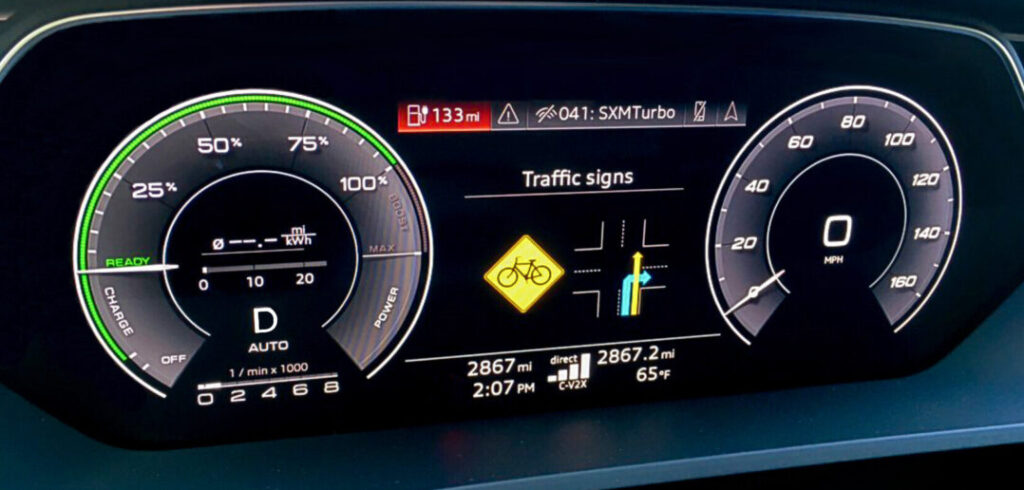Audi of America is to work with a group of companies including mobility platform developer Spoke, Qualcomm and V2X specialist Commsignia, to bring the benefits of cellular vehicle-to-everything (C-V2X) technology to vulnerable road users (VRUs) and enhance safety on roadways.
Using C-V2X technology, the companies are conducting a series of demonstrations of particular bicycle-to-vehicle use cases to explore solutions to make Audi vehicles aware of bicyclists and other VRUs, as well as create safety alerts that can help prevent incidents among all road users.
The C-V2X demonstrations aim to validate Spoke’s hardware and software suite, which is designed to be the industry’s first reliable, robust connected system to offer secure, direct communication for contextual awareness and alerts between drivers and bike riders.
Audi is developing hardware and software using its all-electric Audi e-tron Sportback test vehicle to use both direct vehicle-to-bicycle communication using short-range signals that do not rely on a cellular network, as well as LTE signals that use cellular towers to identify bicycles on the road. Vehicles will be able to read their surroundings to identify when bicycles are nearby, interfacing with Spoke Safety’s connected suite, and even identify bicycles that may be obstructed from a driver’s view.
Audi notes that it has been working with partners in the USA since 2020 to develop C-V2X technologies aimed at protecting VRUs. For example, in Northern Virginia, organizations including the Virginia Tech Transportation Institute and Virginia Department of Transportation teamed up with Audi and Qualcomm Technologies on a C-V2X-based program to inform vehicles approaching a construction zone, alert drivers of a work-zone speed limit when entering construction zones, and alert roadside workers when vehicles were close to construction zones via a connected safety vest.
Furthermore, in Alpharetta, Georgia, Audi collaborated with Applied Information and the Fulton Co. School System, Qualcomm Technologies and others, to connect cars with school buses to identify when children were boarding or exiting buses as well as show vehicle drivers when they were entering active school zones.


